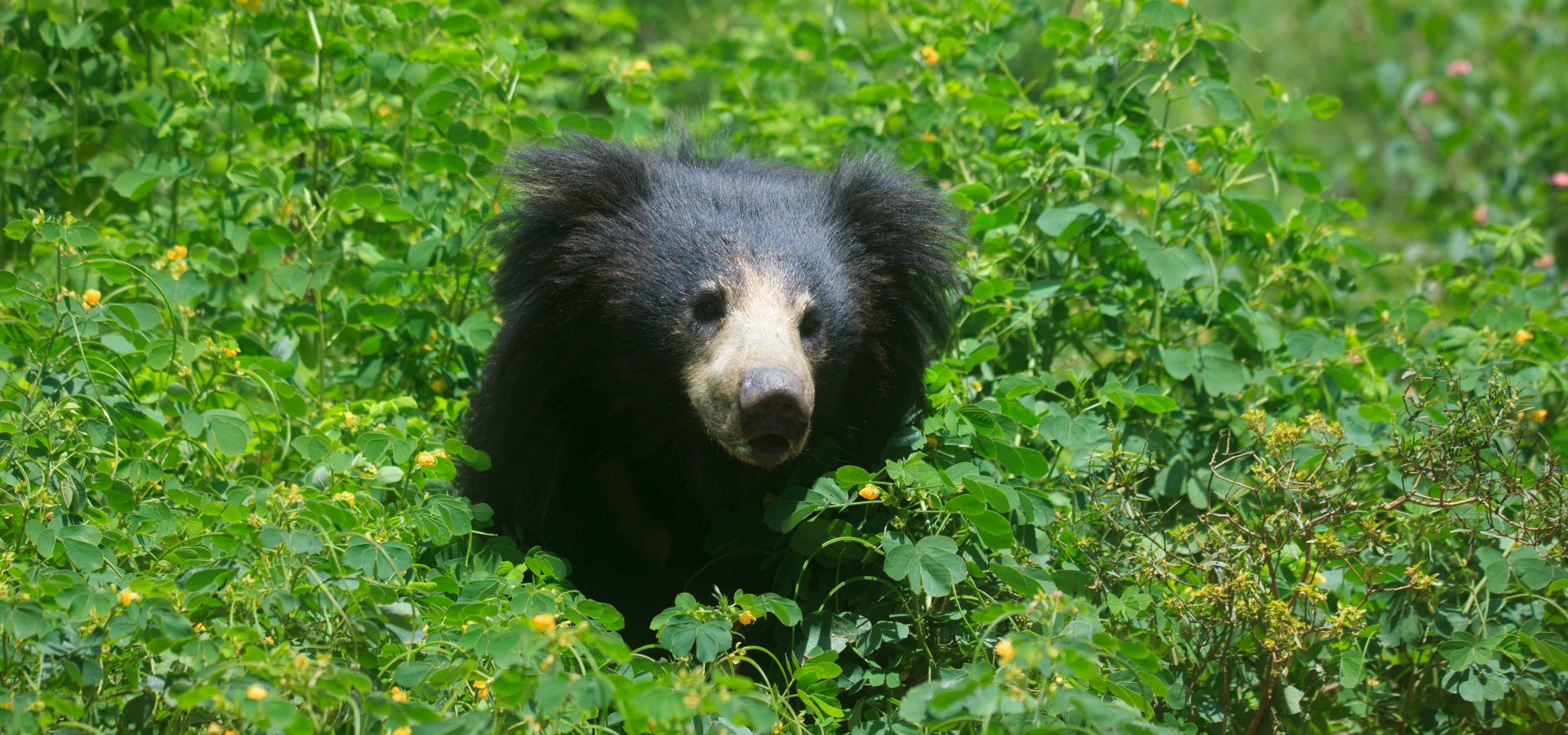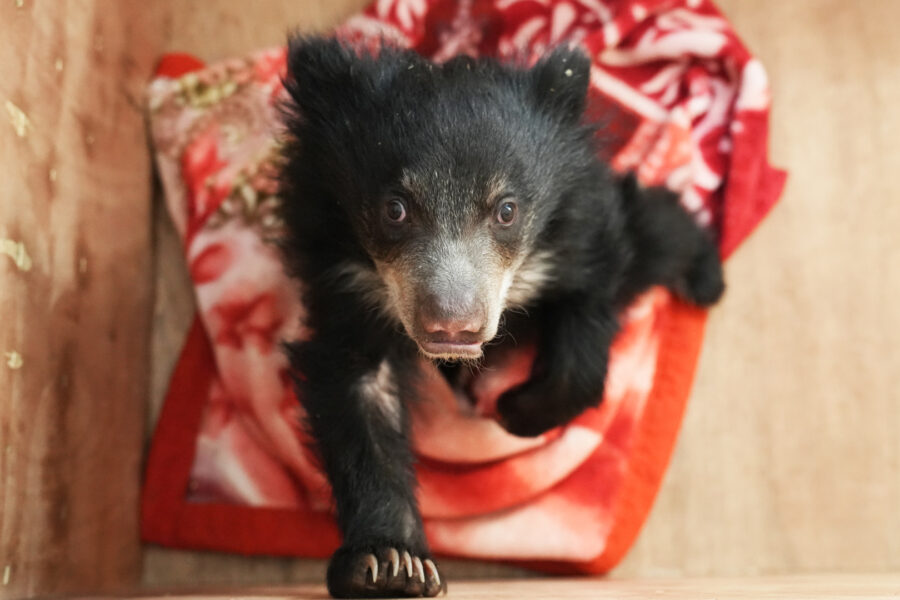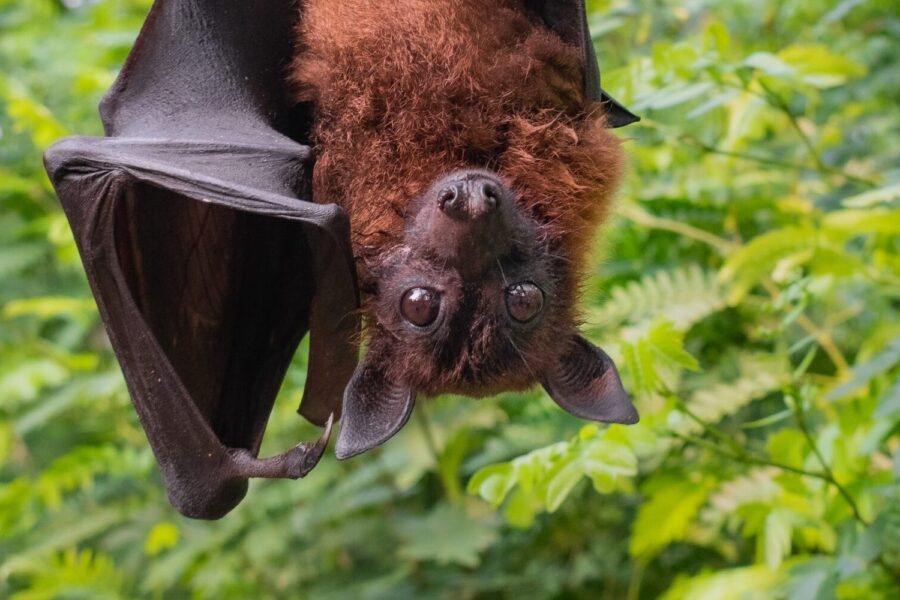India is home to the world’s four bear species – the Himalayan Brown Bear, Asiatic Black Bear, Sun Bear, and the more commonly found, Sloth Bear (Melursus ursinus). Dispersed in patches throughout the mainland, sloth bears occupy a wide range of habitats like grasslands, scrublands, dry, and moist tropical forests. The species is distinguished by a white or yellow U-shaped mark on the chest in contrast with their long, shaggy black coat. A characteristic long snout, similar to that of anteaters and pangolins, helps them efficiently follow a myrmecophagous diet. The presence of a long tongue, curved claws, and lower incisors is also an adaptation to their habits. Relying majorly on a diet of termites and ants, with a small proportion of fruits and honey, sloth bears are highly adaptable creatures.
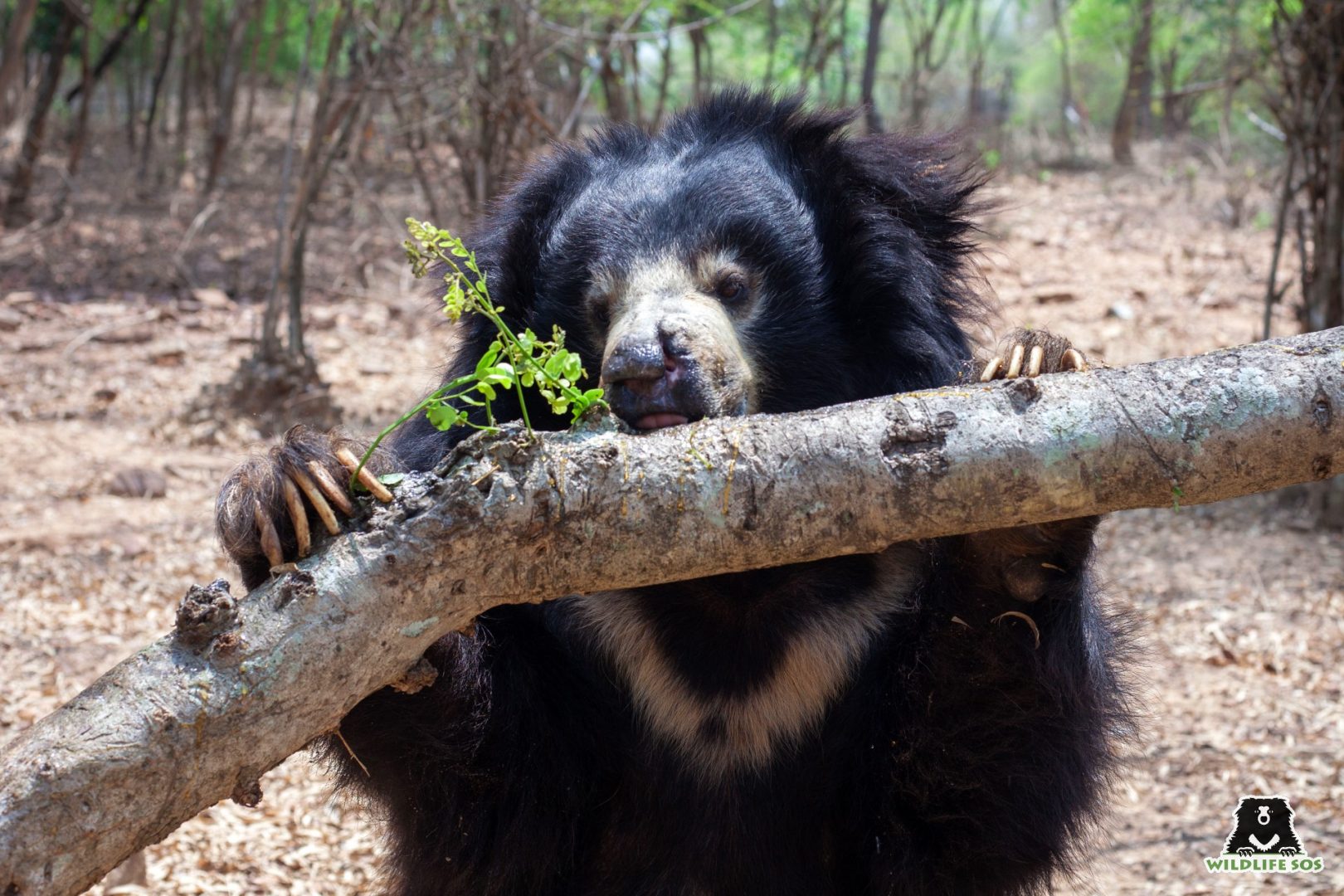
While one would assume the adaptable nature would work in favour of the species, it is quite the opposite. Sloth bears are often spotted in human-dominated landscapes such as villages and agricultural fields. This certainly leads to numerous situations of human-bear conflict in these areas. The conflict imposes an unbiased impact on both species, resulting in frequent mortality and injuries. Unfortunately, sloth bears’ ability to tolerate and thrive in disturbed environments makes them more vulnerable to anthropogenic risks. Some reports suggest the bear population has been reduced by 30-49% over the last three decades, additionally owing to habitat loss, over-exploitation, and poaching. Due to the grave threats, sloth bears are listed as Vulnerable on the IUCN Red List. They are also protected under Schedule I of Wildlife (Protection) Act, 1972 and under Appendix I of CITES.
Threats to wild sloth bears
The frequency of conflicts between humans and sloth bears is fairly high in numerous parts of the country. Most affected areas include the states of Karnataka, Himachal Pradesh, Chhattisgarh, Rajasthan, Odisha, and Madhya Pradesh. These places provide high-quality habitats for the species to flourish. However, due to expanding human populations, suitable areas are also affected by habitat loss, fragmentation, destruction, exploitation, and encroachment. Such situations compel the two species, bears and humans, to inhabit closely, and thereby engage in countless interactions.
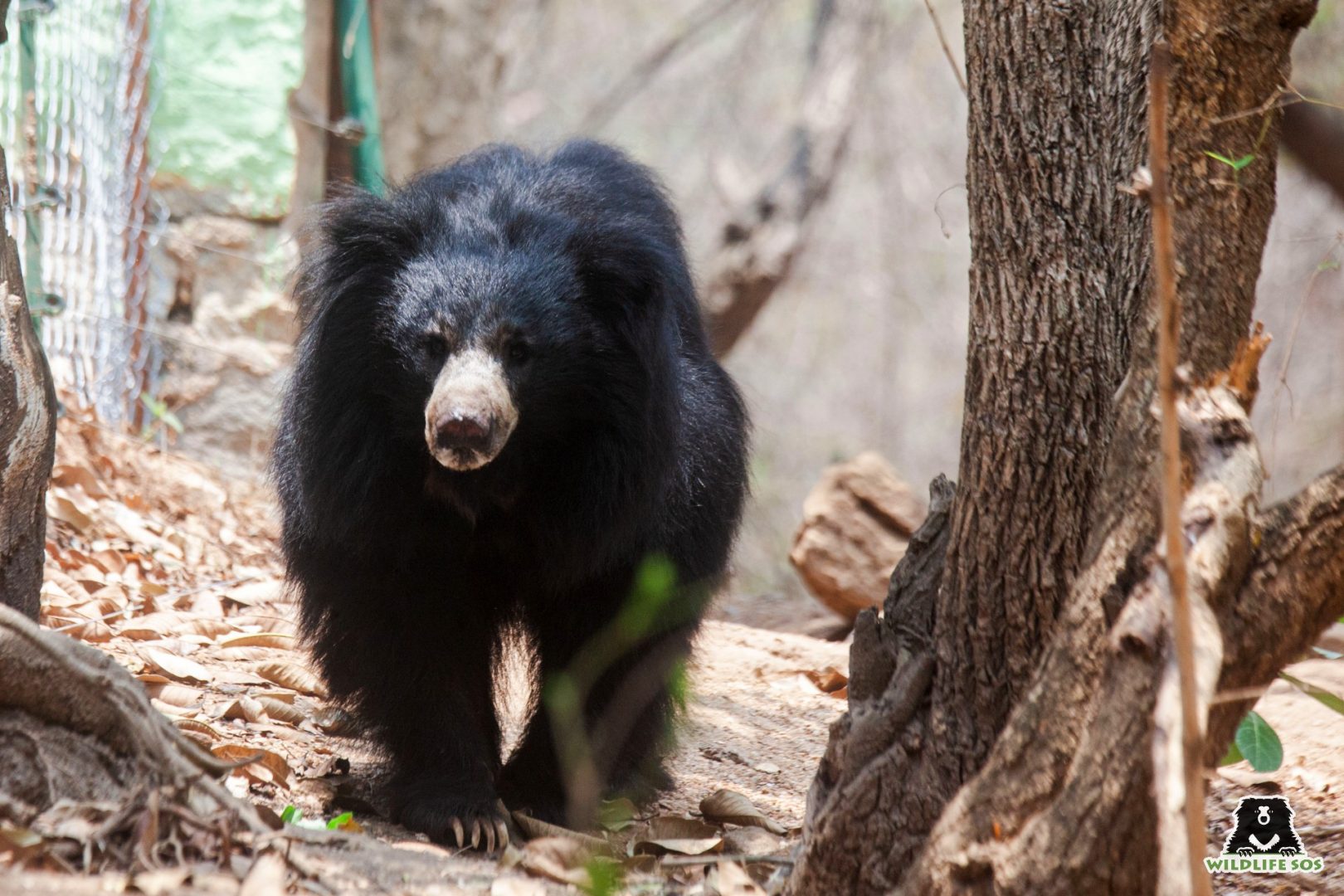
Oftentimes, sloth bears are labelled as “problematic” or “nuisance-causing” animals. Local communities respond by attacking sloth bears in retaliation. Such incidents not only lead to mortality and injuries but inculcate insensitivity and negative perception about wildlife amongst the public. In various regions, people fear these animals due to their aggressive and unpredictable nature. In the long run, this belief would result in the loss of public support necessary for wildlife conservation.
Anthropogenic sources of conflict
Over time, human populations have devised numerous ways to retaliate and pose threats to wild sloth bear populations. Snares made of wires and cables are often set to obtain meat from species like wild boar and Indian hare. They are also generally set up by farmers around agricultural fields to avoid crop-raiding by animals. Similar to snares, setting up barbed wire fences around the crop fields aims at maiming and excluding problematic animals. However, sloth bears unintentionally fall victim to such ad-hoc methods of repelling or poaching wildlife.
Farmers generally design crude explosive devices using locally available items. By setting up these devices near their agricultural fields, people aim at reducing the crop depredation caused by herbivores and omnivores. Unfortunately, the device doesn’t discriminate between raiding creatures and wild animals like sloth bears. Locals also use guns to shoot and eliminate wild animals, which may sometimes include bear species. Sometimes, when a bear attack is recorded from an area, locals inhabiting that place become intolerant to the wildlife. They retaliate by attacking and even killing bears, which may or may not have been involved in the conflict situation.
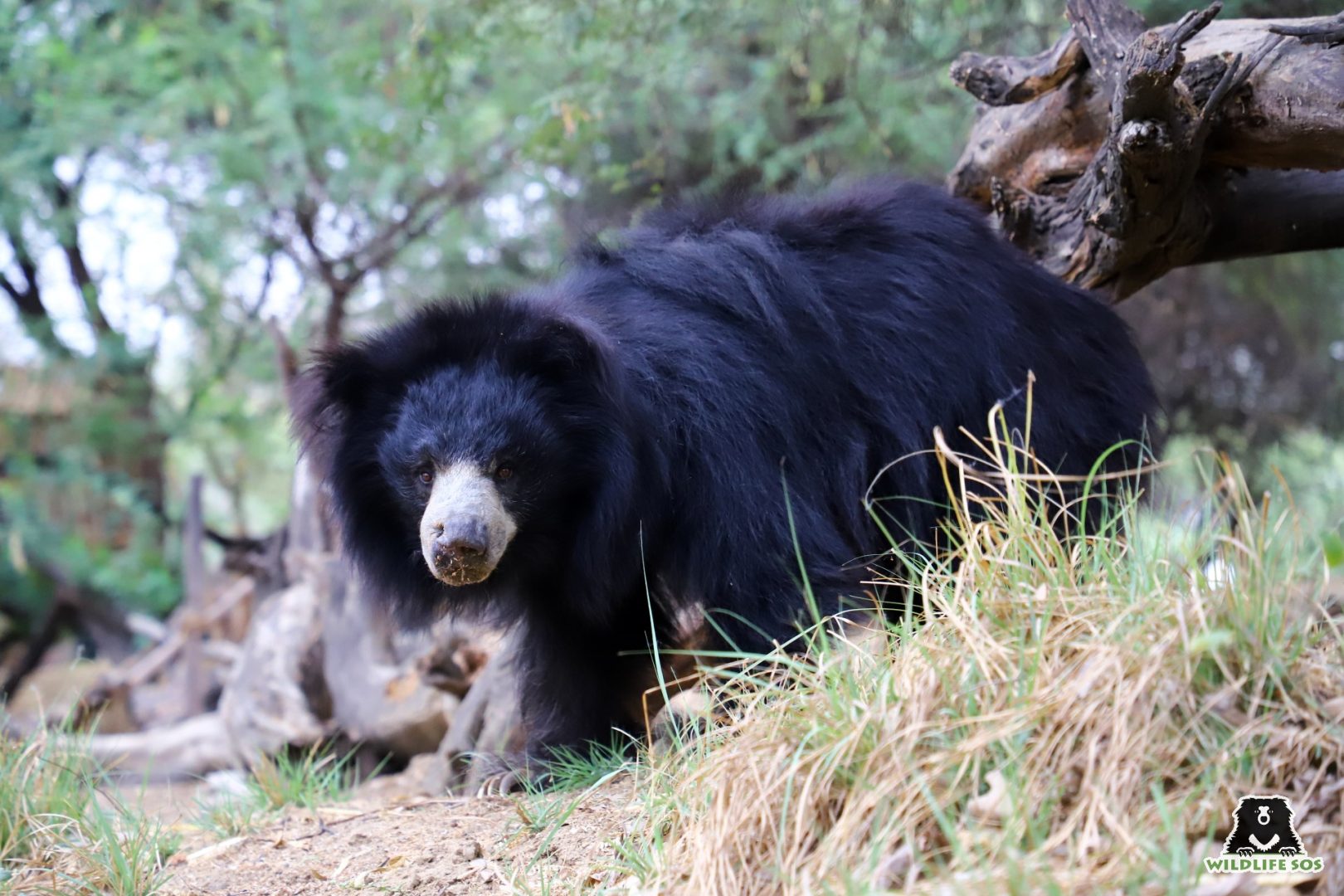
Human habitation brings along several anthropogenic structures like roads, infrastructure, and wells to sustain its survival. A survey estimated the presence of nearly 8.7 million open wells constructed across the Indian subcontinent. While some of these wells are still in use, many of them are abandoned due to the reduced water levels. Wildlife species that perceive wells to be a source of water are at risk of falling and drowning in the open wells. Animals falling in dry wells face lingering deaths, while those in water-filled wells may drown and suffer from severe injuries.
Although sloth bears are diurnal in protected areas, they tend to be almost exclusively nocturnal in disturbed and fragmented forests interspersed with human habitations. Structures that disrupt and coarse through forest lands, such as roads, make wildlife more prone to anthropogenic risks. Sloth bears are frequently involved in vehicular collisions and become roadkills.
Role of Wildlife SOS in conflict management
For more than two decades, Wildlife SOS has been working towards conflict management, rescue, and rehabilitation of bears. The team recently published a study on sloth bears that have fallen victim to anthropogenic risks in the state of Karnataka. Bears injured, trapped, or killed due to numerous human-posed threats were studied between 2006-2007 and 2013-2019.
Wildlife SOS in collaboration with the Karnataka Forest Department, documented all such incidents by date, location, type, cause, and details of the bear. In the specified period of time, 44 incidents of sloth bears subjected to anthropogenic threats were identified. The teams discovered snares, explosives, open wells, vehicular collisions, gunshots, barbed wires, and mob attacks to be the source of conflict. These ursids often choose to raid croplands to seek either shelter or food sources. Hence, numerous incidents involving snare-related conflicts were recorded from or near agricultural areas during the period of crop harvesting.
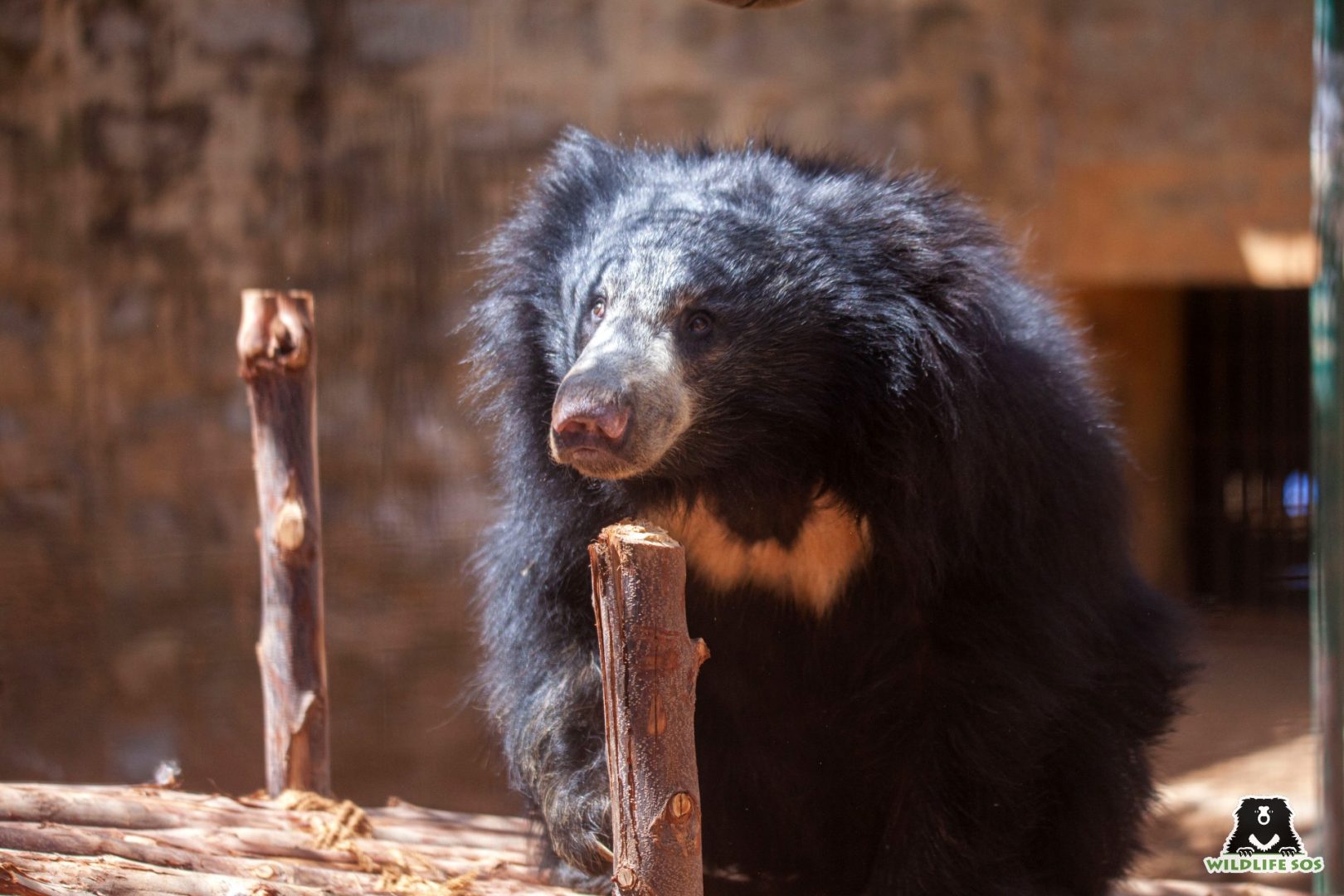
The team was able to treat some of the bears trapped in snares and wire fences and those fallen in wells. Upon complete recovery, these individuals were eventually released back into the wild. Some of the bears who suffered from permanent injuries due to snares and falling in open wells were put under long term care at the organisation’s Bannerghatta Bear Rescue Centre (BBRC). Unfortunately, numerous bears have also died due to road accidents, falling in wells, explosives, gunshots, mob attacks, and being caught in snares.
Living with the bears
In India, sloth bear populations inhabit more than 174 protected areas. Oftentimes, the demarcation between wild and human-made is porous, making wildlife oblivion to the set boundaries. Hence, about half to two-thirds of individuals live on lands beyond the designated protected areas. Being versatile in nature, the species has adapted to landscapes in close proximity to humans. They often ramble along, forage, and sustain on agricultural lands. Populations across India heavily rely on crops such as peanut, maize, and various fruits. Moreover, human-dominated areas are often used by female bears as dens or caves for giving birth to and providing for their young ones. Although they are well protected in guarded lands, sloth bears face numerous anthropogenic risks outside PAs.
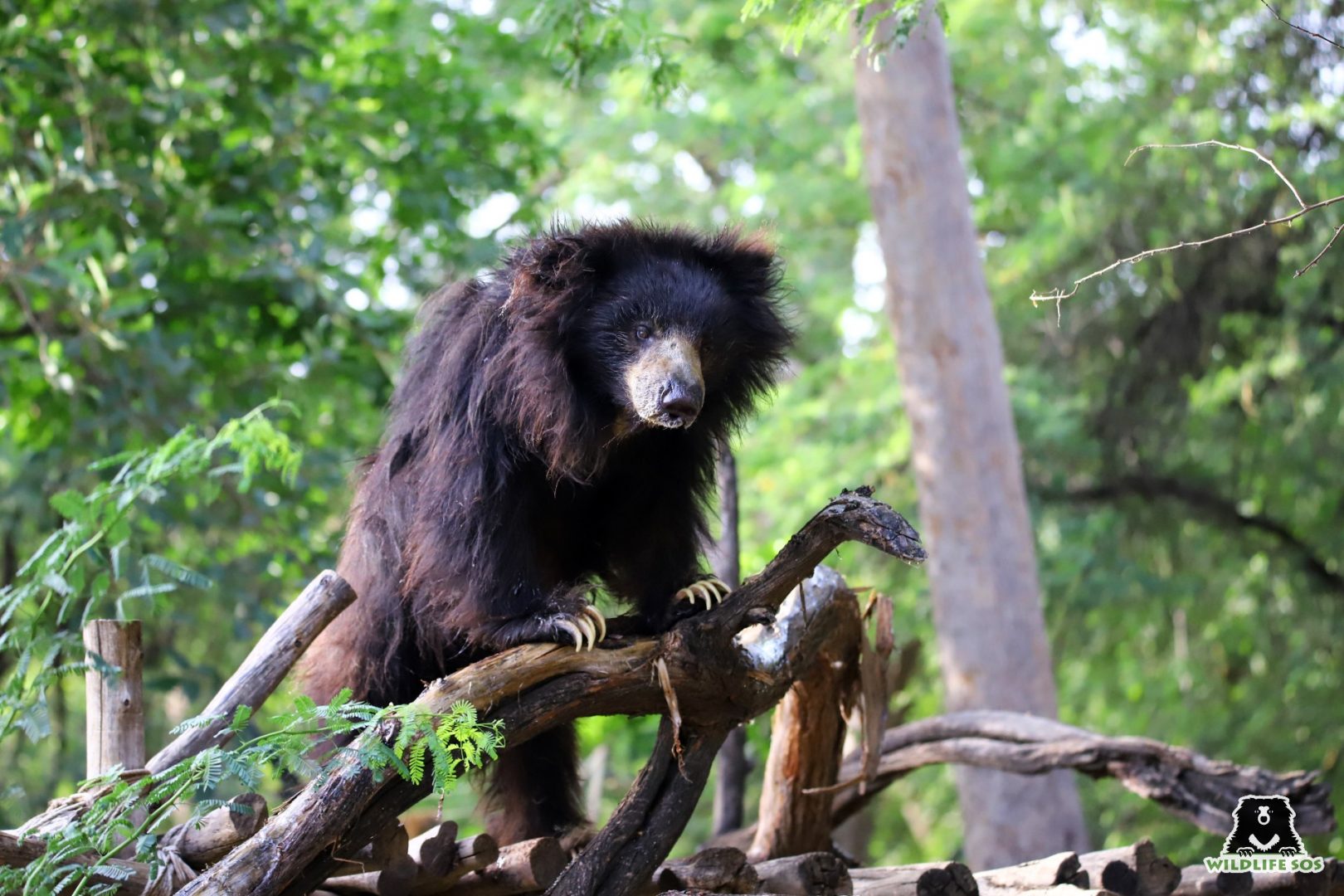
Keeping the conflict aside, proximity between humans and sloth bears has yielded several positive interactions as well. Over the years, various cultures have developed an acceptance of the species. Several communities are known to co-exist with them as bears freely wander around religious places for food and humans generously offer them the eatables.
For the survival of these bears, it is necessary that we learn to live in harmony with the wildlife that surrounds us. Conflict management is crucial for not just humans, but bear populations as well. Besides reducing the number of negative interactions, this will also invoke a positive perception and aid in wildlife conservation. In order to mitigate road accidents, we suggest the construction of underpasses for sloth bears and illuminating bear crossing signs in key areas. Installation of speed cameras may also be used to enforce reduced speed in areas with the habitation of sloth bears.
Adding a means of escape in open wells and surrounding them with thorny vegetation would avoid wildlife to drown and face fatalities. Moreover, enhancing awareness related to their ecological importance, tackling conflict, and avoidance behaviour would prove to be crucial. Coming up with alternate practices that curtail the dependency on forest products and illegal trade would also bring about a considerable change. Finally, imposing harsh penalties on the use of threatening means for wildlife would undoubtedly aid in combating the issue.
Team Wildlife SOS has recently put forth a public awareness film called “Living with Sloth bears” to educate local communities living in sloth bear-dominated regions about conflict mitigation and co-existence in India. To support the work that our team does for bear conservation, consider becoming a monthly donor or sponsor to support the upkeep of the rescued and rehabilitated bears.

